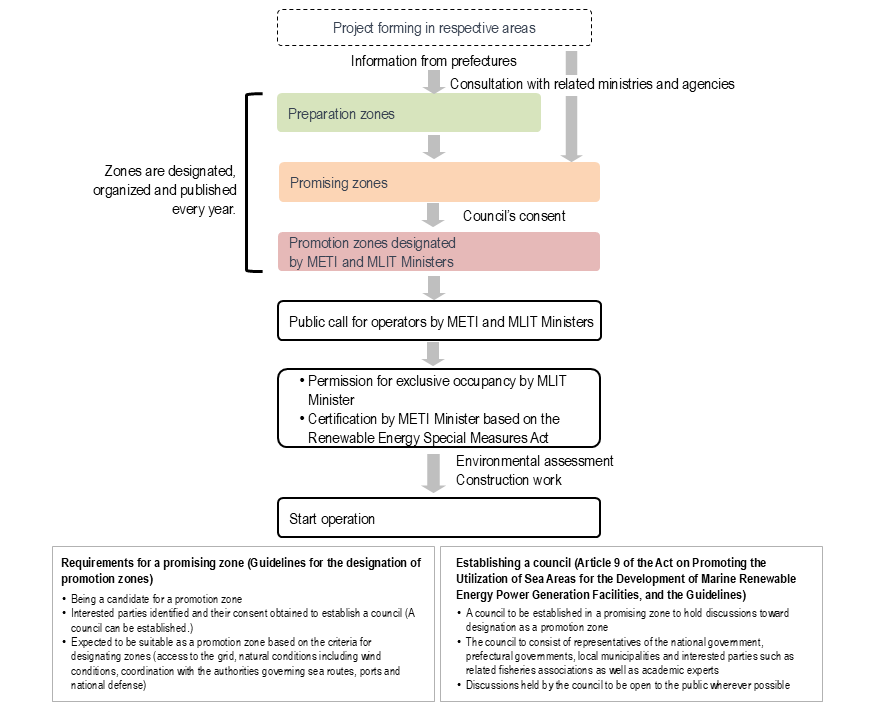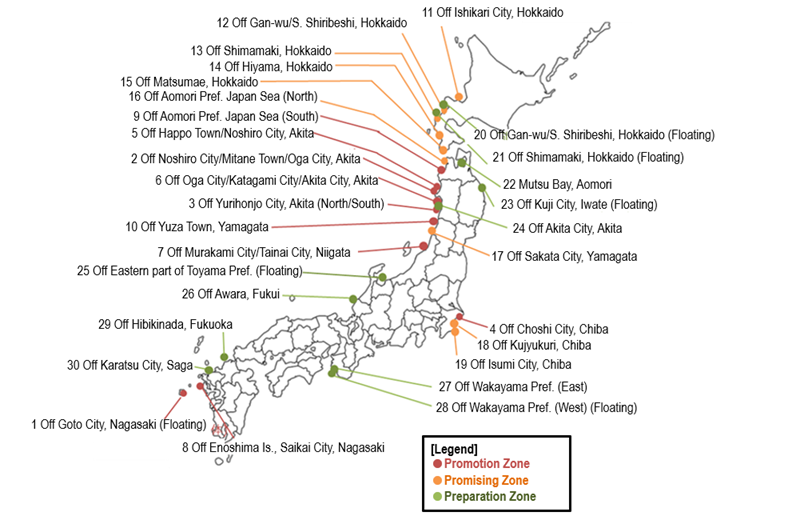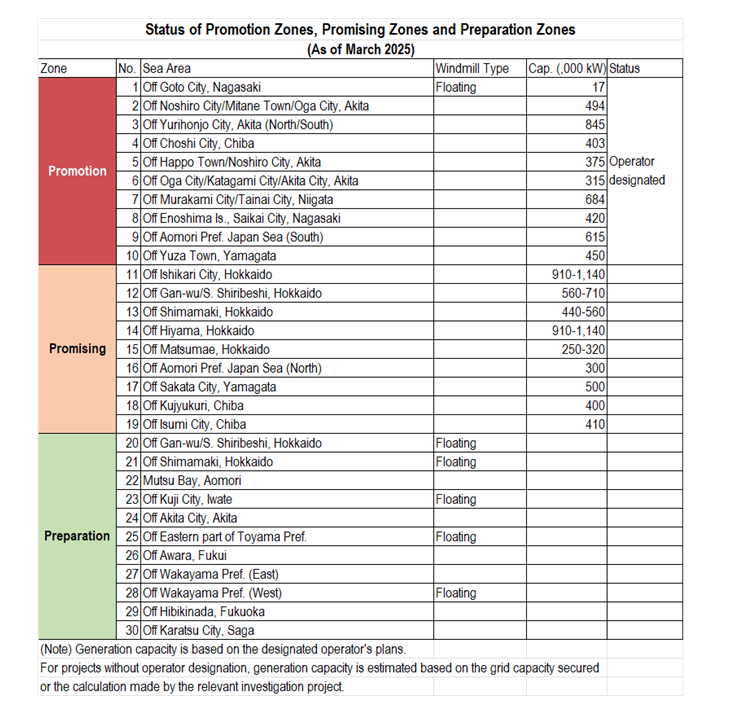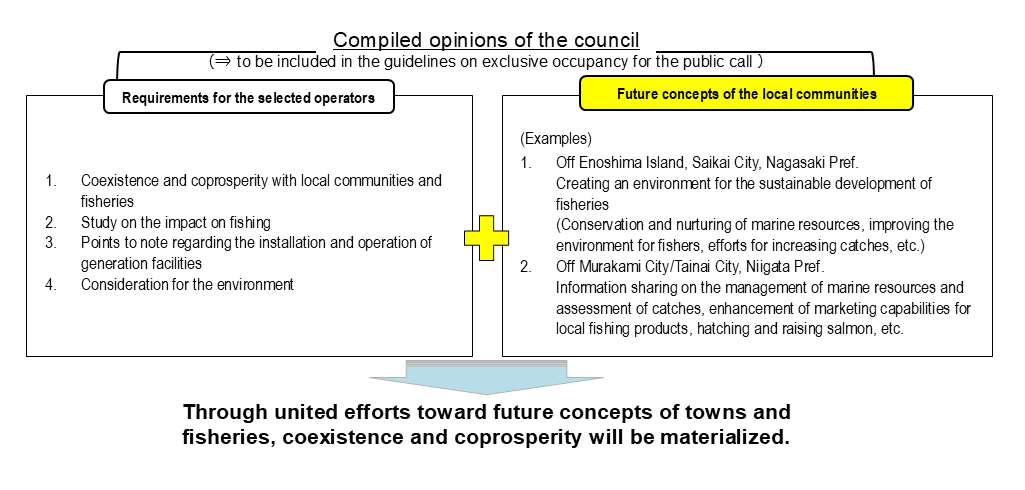Japan’s Offshore Wind Power Generation
Now and the Future
(Provisional translation)
(English ver.) 2025-07-25

Offshore wind farm off the Port of Akita (Source: Akita Offshore Wind Corporation)
Toward realizing Japan’s net zero by 2050 pledge, it is necessary to expand the introduction of renewable energy that emits no CO2. Among other renewables, offshore wind power generation has been attracting attention in recent years. While past Special Contents articles have touched on offshore wind power generation, this article provides updates on the current situation and future prospects as the installation of offshore wind farms progresses in Japan.
The anticipated role of wind power generation in realizing carbon neutrality
To realize net zero, efforts are required to reduce energy-related CO2, which currently accounts for 85% of total greenhouse gas (GHG) emissions.
Those efforts include expanding the introduction of renewable energy that produces no CO2 emissions. We will begin by seeking to boost the renewables share of the power source mix to between 36 and 38%, as shown in the FY2030 Energy Mix. We will then advance our efforts, aiming for a 40 to 50% share, as shown in the FY2040 Energy Mix. Of this, wind power generation is expected to account for 4 to 8%.
Outlook for energy supply and demand in FY2040: “FY2040 Energy Mix”
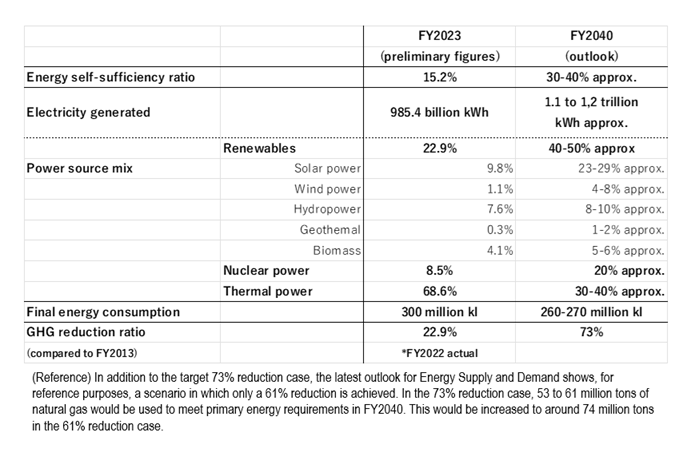
The Offshore Wind Power Industry Vision compiled in December 2020 sets out the aim to develop offshore wind power projects of 10 GW by 2030 and 30 to 45 GW by 2040 as a national goal. As of 2024, projects totaling 5.1 GW are being developed.
Status of the introduction of offshore wind power generation
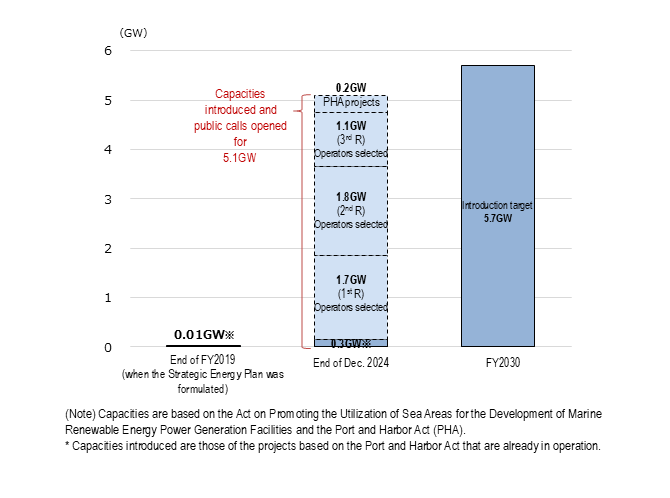
Why is offshore wind power generation promising?
Let us review why offshore wind power generation is important to Japan by taking a look at some of our past articles on the subject.
Special Contents first issued an article on offshore wind power in February 2018. The article explained that while there was limited introduction of this power generation method in Japan, it was being widely introduced overseas. It also noted that several challenges would have to be addressed for Japan to catch up.
The biggest problem, among others, is the limited amount of land available to accommodate wind farms in Japan due to the country’s mountainous terrain. To address this challenge, offshore wind power generation is attracting attention.
Offshore wind power generation has the following characteristics:
- It is being expanded overseas, particularly in Europe. Japan, a country that is surrounded by sea, has tremendous potential.
- In Europe, projects in shallow waters in the North Sea are progressively achieving cost reductions. Some successful bids have achieved costs of less than 10 yen per kWh, while other projects are feasible without subsidies.
- Construction requires tens of thousands of parts due to the large-scale nature of the projects, creating economic ripple effects in related industries and contributing to the revitalization of local communities.
The characteristics of offshore wind power generation
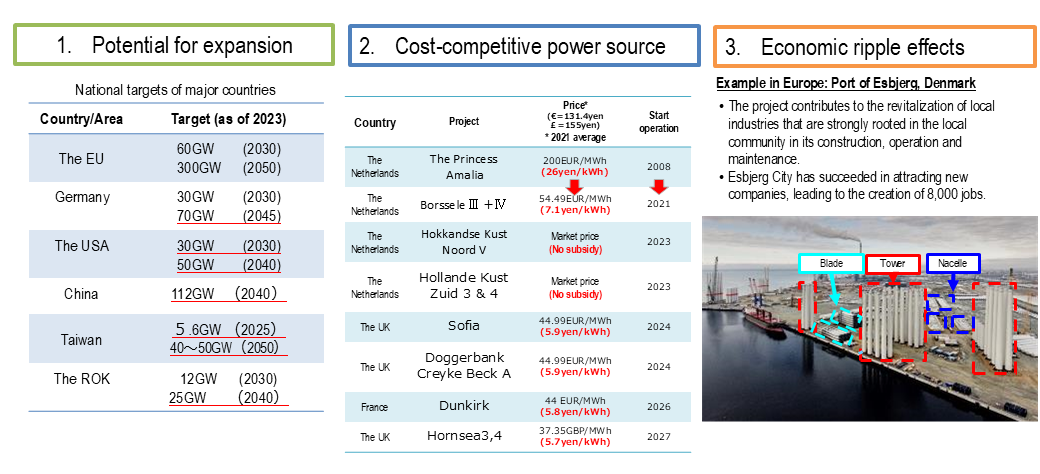
Although the Port and Harbor Act was revised to establish rules applicable to port and harbor areas in July 2016, there were no comprehensive rules in other general sea areas for which utilization was sought as of 2018. Under prefectural ordinances, permission to occupy a sea area was granted only for a few years, which hindered long-term projects. There were therefore vocal calls to develop rules to promote offshore wind power generation.
Against this backdrop, the Act on Promoting the Utilization of Sea Areas for the Development of Marine Renewable Energy Power Generation Facilities was put into effect in April 2019. This act now serves as a driving force to promote the formation of offshore wind power generation projects.
Concerns about the viability of projects have emerged, however, as certain overseas projects are being delayed or withdrawn due to the inflation seen in recent years. Japan is also facing the problem of having no domestic manufacturers of large-sized wind turbines. It is necessary to address these challenges from the perspectives of both energy policy and industrial policy in promoting the introduction of offshore wind power generation.
Future concepts of towns existing in harmony with offshore wind power generation facilities are emerging nationwide
Based on the Act on Promoting the Utilization of Sea Areas for the Development of Marine Renewable Energy Power Generation Facilities, the classification of zones and public calls for operators are to be conducted along the following lines.
The current status of the classification and designation of zones is shown below:
The point to note is the establishment of a council (statutory council) in accordance with the Act on Promoting the Utilization of Sea Areas for the Development of Marine Renewable Energy Power Generation Facilities. As a requirement for being classified as a promising zone, interested parties must be identified and their consent obtained to establish a council.
The council, comprised of representatives of the national government, prefectural governments, local municipalities and interested parties such as related fisheries associations as well as academic experts, is to hold discussions on the requirements for potential operators. It is essential to form agreement through careful coordination since an offshore wind power generation project cannot proceed without coexistence with the local community and fishing industry. Items agreed upon by the council will be presented in an outcome document called the “Compiled Opinions of the Council,” which must be respected by the members of the council and selected future operators.
Recent council discussions have been focused on, among other topics, future concepts of local communities and fisheries through offshore wind power generation projects. Selected operators are required to make efforts toward realizing these concepts in cooperation with the local communities.
The following are some examples of these future concepts:
- Off Aomori Prefecture Japan Sea (South): Future concept formulated by the council
-
- The return and reintegration of young people by fostering new industries and creating jobs, increasing the interchange of populations, and continuous development of the fishing industry
- Selected operators to implement measures for cooperation and coexistence with a resolve to pursue a shared destiny with the community
- Off Yuza Town, Yamagata Prefecture: Future concept formulated by the council
-
- Creating a sustainable production base for saltwater fisheries and growing the water industry, realizing freshwater fisheries and production activities that grow and develop alongside the local communities, with the bounties provided by rivers continuing to be enjoyed by future generations
- Creating a sustainable and attractive town that offers a viable future to its young people and that will appeal to people from outside areas looking for options for permanent relocation
- Off Matsumae, Hokkaido: Future concept formulated by the council
-
- Positioning the wind power generation project as an important initiative to form a base for addressing a variety of local challenges such as falling population and declining fish catches. In addition to revitalizing the fishing industry, regional development is expected, such as the creation of an environment for new employment, increasing the appeal of sightseeing spots, and building a disaster-resilient town
- Aiming to take advantage of the wind to become a renewable-powered “town that no one wants to leave”
The state of proceedings at these statutory councils is open to the public, with the Compiled Opinions of the Council including the future concept published and made available. You can see how discussions are being held in areas you are interested in. Please keep an eye on the development of offshore wind power generation projects as well as their efforts to coexist with local communities.
Divisions in Charge
About this article
New and Renewable Energy Division, Energy Efficiency and Renewable Energy Department, ANRE
About the Special Contents
Research and Public Relations Office, Commissioner’s Secretariat, ANRE
![]() The original Japanese text of this article; Click here
The original Japanese text of this article; Click here
